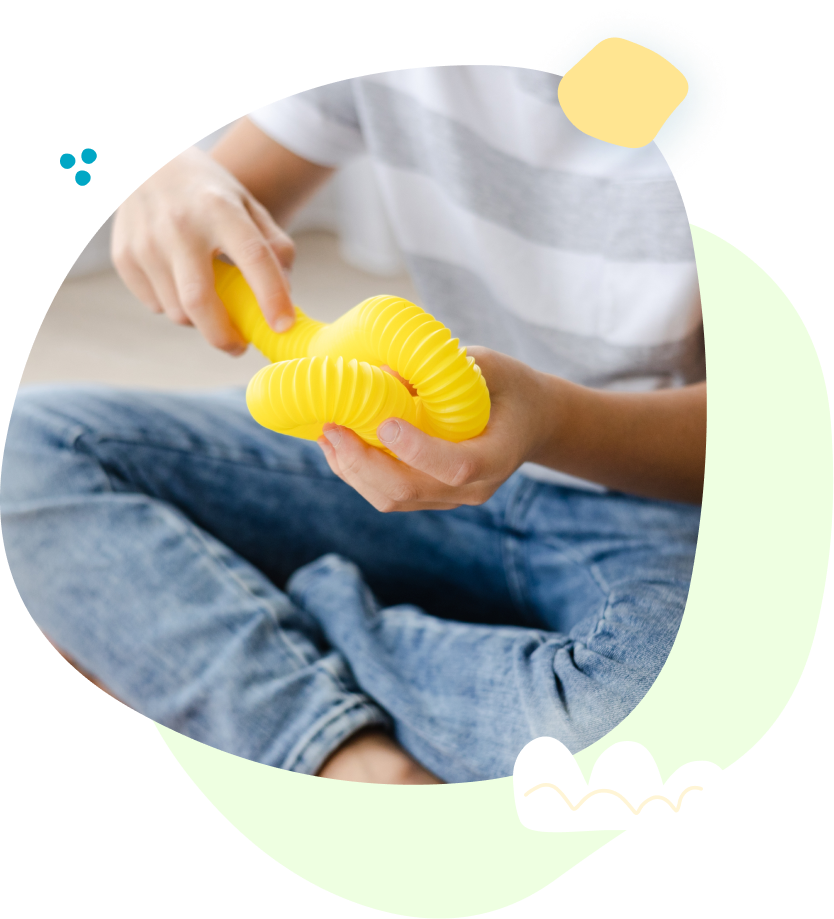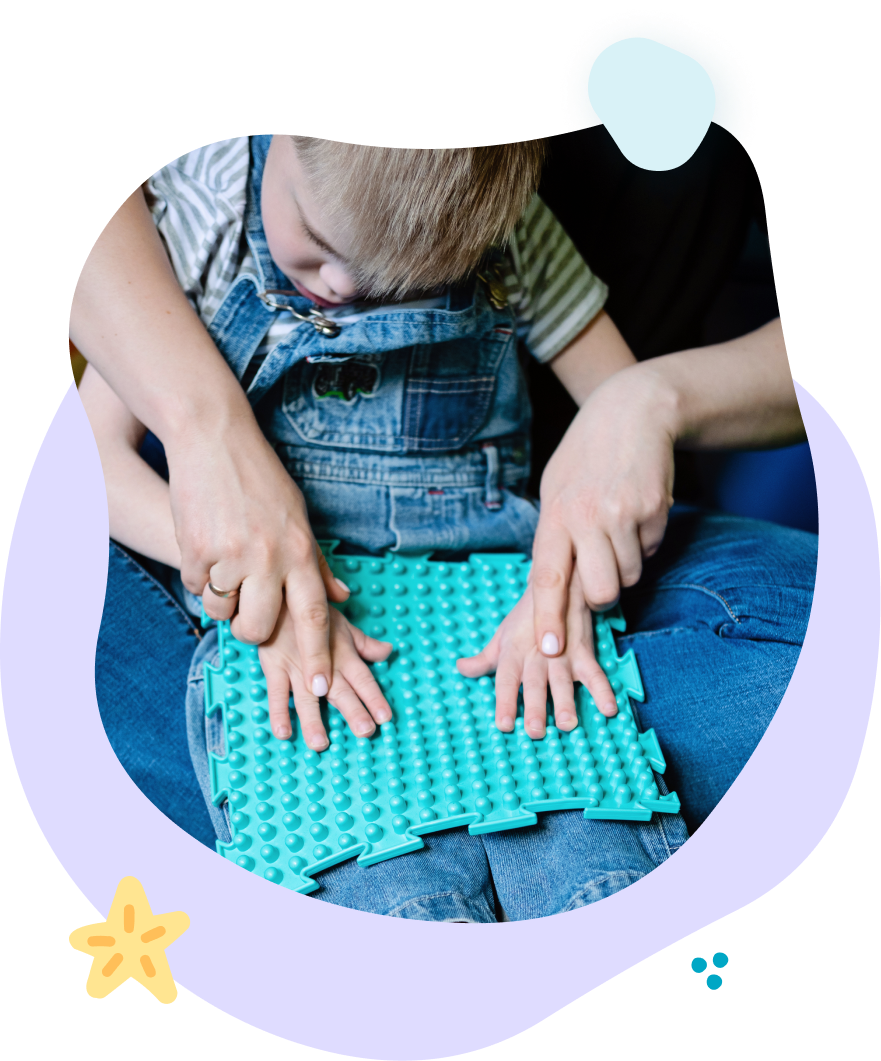Your Clinic
SET A LOCATION
Your Clinic
SET A LOCATION
Understanding Sensory Processing Disorder: How Occupational Therapy (OT) Empowers Children
Sensory Processing Disorder (SPD) affects how the brain processes sensory information, such as sights, sounds, textures, and movements. Children with SPD may find certain stimuli overwhelming, while others may seek more sensory input to feel balanced. This condition can impact daily activities, social interactions, and learning.
Common signs of SPD in children include:
Difficulty tolerating certain fabrics, sounds, or lights.
Unusual reactions to touch or movement.
Challenges with motor skills and coordination.
Avoidance of or craving for sensory experiences.

Children with sensory processing challenges benefit from our targeted therapeutic tools that help the nervous system organize and respond to sensory input more effectively. These interventions support better self-regulation and functional participation in daily activities.



Aquatic Therapy is a skilled treatment method used by therapists to enhance your child's functional abilities. The warm, buoyant water enables your child to feel free and have fun in therapy, in a natural environment! The water's buoyancy reduces stress on joints and muscles while providing resistance for strength building, making it particularly beneficial for children with movement limitations.
Korro AI is an innovative platform revolutionizing occupational therapy with artificial intelligence. Designed to streamline therapy planning and enhance patient outcomes, Korro AI empowers therapists with data-driven insights, automated progress tracking, and personalized treatment recommendations. This cutting-edge technology helps optimize therapy sessions and provides objective measurements of progress.
PPT uses cutting-edge tools like Galileo whole-body vibration platforms and Mano dumbbells to enhance therapy outcomes. Therapeutic vibration helps to optimize neuroplasticity, promote motor learning and decrease the complications of many childhood conditions that limit movement, sensory processing skills, and learning. A unique therapeutic intervention used to decrease muscle tightness, change habitual patterns of movement in a single joint, or improve range of motion.

Occupational therapy (OT) provides tailored interventions to help children with SPD navigate their sensory challenges and thrive in everyday environments.
Key Benefits of OT for SPD:
OT uses evidence-based techniques to help children respond appropriately to sensory input. Activities might include swings, balance boards, or tactile games designed to improve sensory processing.
Therapists work on developing fine and gross motor skills, improving coordination and confidence.
Through guided exercises, children learn strategies to manage their responses to overstimulation or under-stimulation.
OT often includes education and practical tools for families to create sensory-friendly environments at home and school.
Sensory integration therapy involves structured activities in a controlled environment, helping children adapt to different stimuli. For example:
Activities like jumping, pushing, or pulling provide deep pressure input, which can calm an overstimulated nervous system.
Swinging or spinning helps improve balance and spatial awareness.
Exploring textures like sand, water, or slime encourages positive touch experiences.
Therapists assess each child’s sensory profile to design interventions tailored to their unique needs and goals.
Occupational therapy (OT) offers a holistic approach to support children’s physical, emotional, and social development. By addressing sensory challenges early, OT helps children develop the skills they need to succeed in school, build friendships, and participate in daily life with confidence.
If your child shows signs of SPD that interfere with daily activities, consulting with a pediatric occupational therapist is a great first step. Early intervention can significantly improve long-term outcomes.

If you’re concerned about your child’s sensory processing and want expert support, we’re here to help. Contact Progressive Pediatric Therapy for a comprehensive evaluation and learn how occupational therapy (OT) can empower your child to reach their full potential.
We empower children, families, and the community to learn, grow, and celebrate every child's unique abilities.
Quick Links
Contact Details
Phone: 561-376-2573 | 561-918-0190
Fax: 561-218-4939
VIP Concierge: 561-717-1764
Clinic Locations
All Rights Reserved | Progressive Pediatric Therapy, Inc. | Privacy Policy | Terms of Service
Site by Spearlance